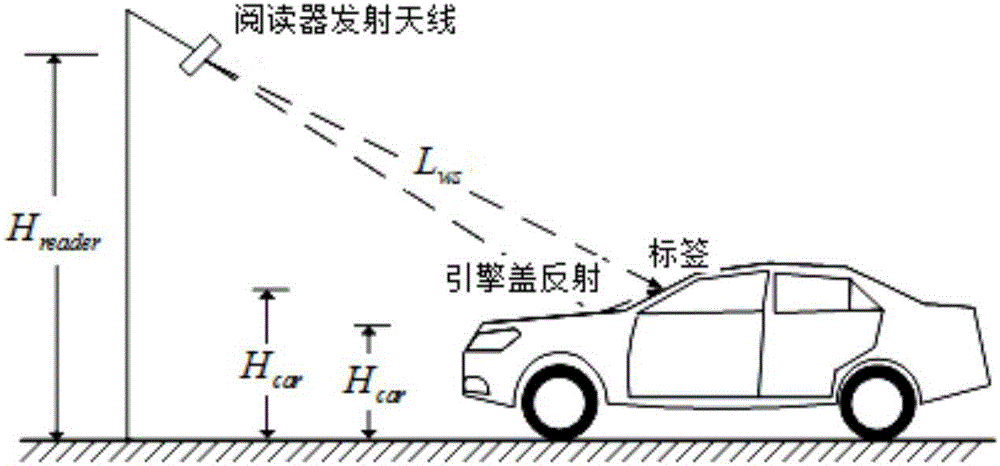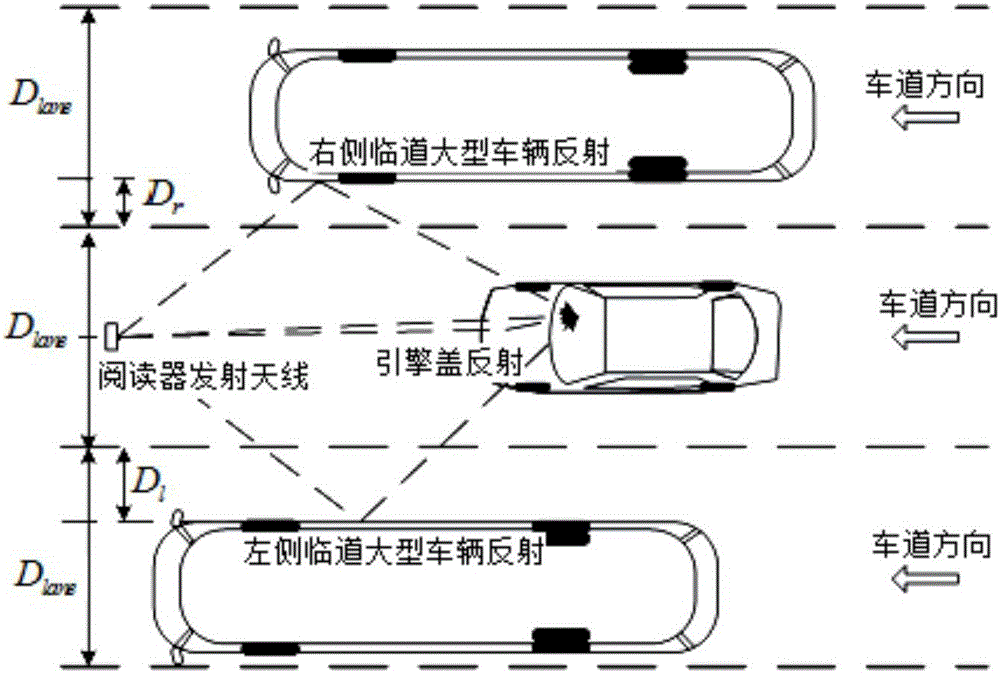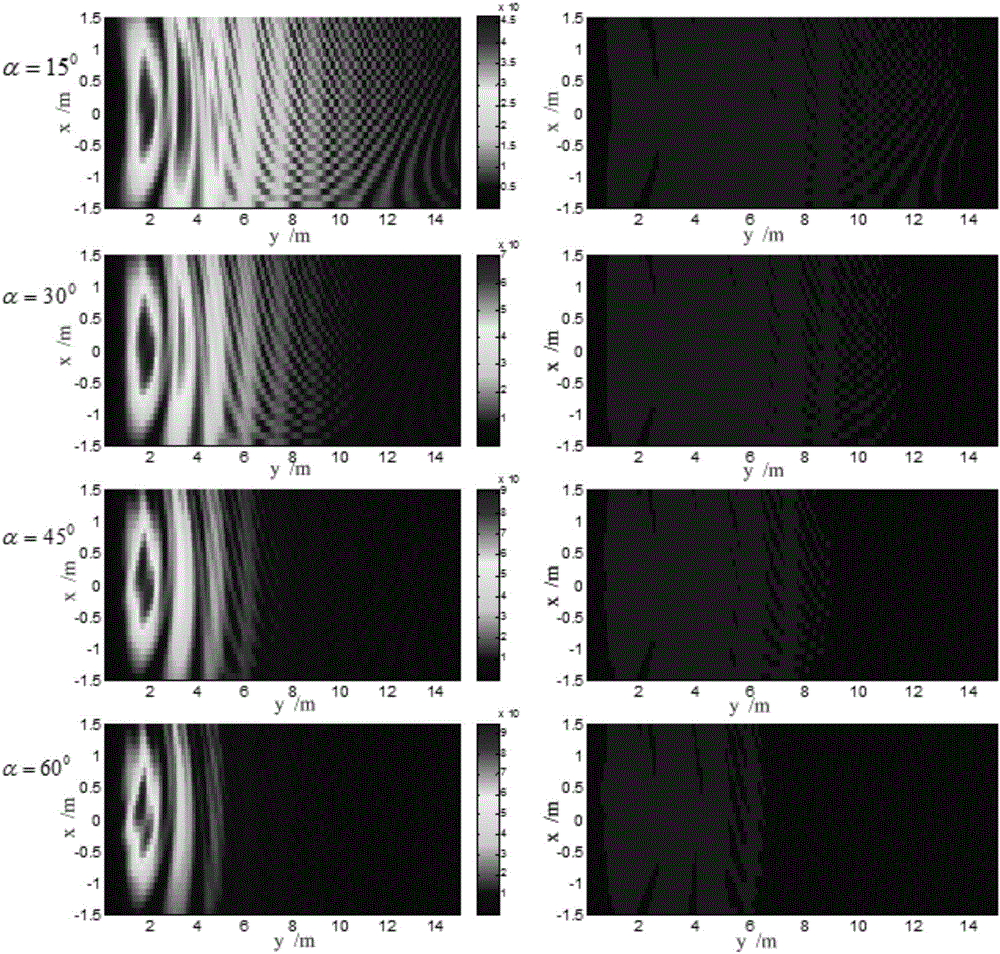Label reception power prediction method of ultra high frequency (UHF) radio frequency identification (RFID) electronic toll collection (ETC) applications
A prediction method and received power technology, which is applied in special data processing applications, electromagnetic radiation induction, induction record carrier, etc., can solve the problems of time-consuming and laborious, difficult to accurately select statistical values, etc., and achieve high application value and high prediction accuracy Effect
- Summary
- Abstract
- Description
- Claims
- Application Information
AI Technical Summary
Problems solved by technology
Method used
Image
Examples
Embodiment 1
[0088] step 1):
[0089] Refer to the national standard for short-range communication for electronic toll collection (GBT 20851.1-2007) and the ISO18000-6C standard to determine the geometric parameters and radio frequency parameters of the application scene, as shown in Table 1.
[0090] Table 1 Scenario test and simulation parameters
[0091]
[0092] Step 2):
[0093] Calculate the Cartesian coordinates of the hood reflection point;
[0094] Step 3):
[0095] Calculate the incident wave and reflected wave direction unit vector about the primary reflection on the ground and normal vector
[0096] Step 4):
[0097] If there is no primary reflection of the vehicle on the road, go to step 7, otherwise continue;
[0098] Step 5):
[0099] For the left and right vehicles, calculate the Cartesian coordinates P of the reflection point 2 and P 3 ;
[0100] Step 6):
[0101] Find the unit vector of the reflected wave and incident wave direction for the primary reflec...
PUM
 Login to View More
Login to View More Abstract
Description
Claims
Application Information
 Login to View More
Login to View More - R&D
- Intellectual Property
- Life Sciences
- Materials
- Tech Scout
- Unparalleled Data Quality
- Higher Quality Content
- 60% Fewer Hallucinations
Browse by: Latest US Patents, China's latest patents, Technical Efficacy Thesaurus, Application Domain, Technology Topic, Popular Technical Reports.
© 2025 PatSnap. All rights reserved.Legal|Privacy policy|Modern Slavery Act Transparency Statement|Sitemap|About US| Contact US: help@patsnap.com



